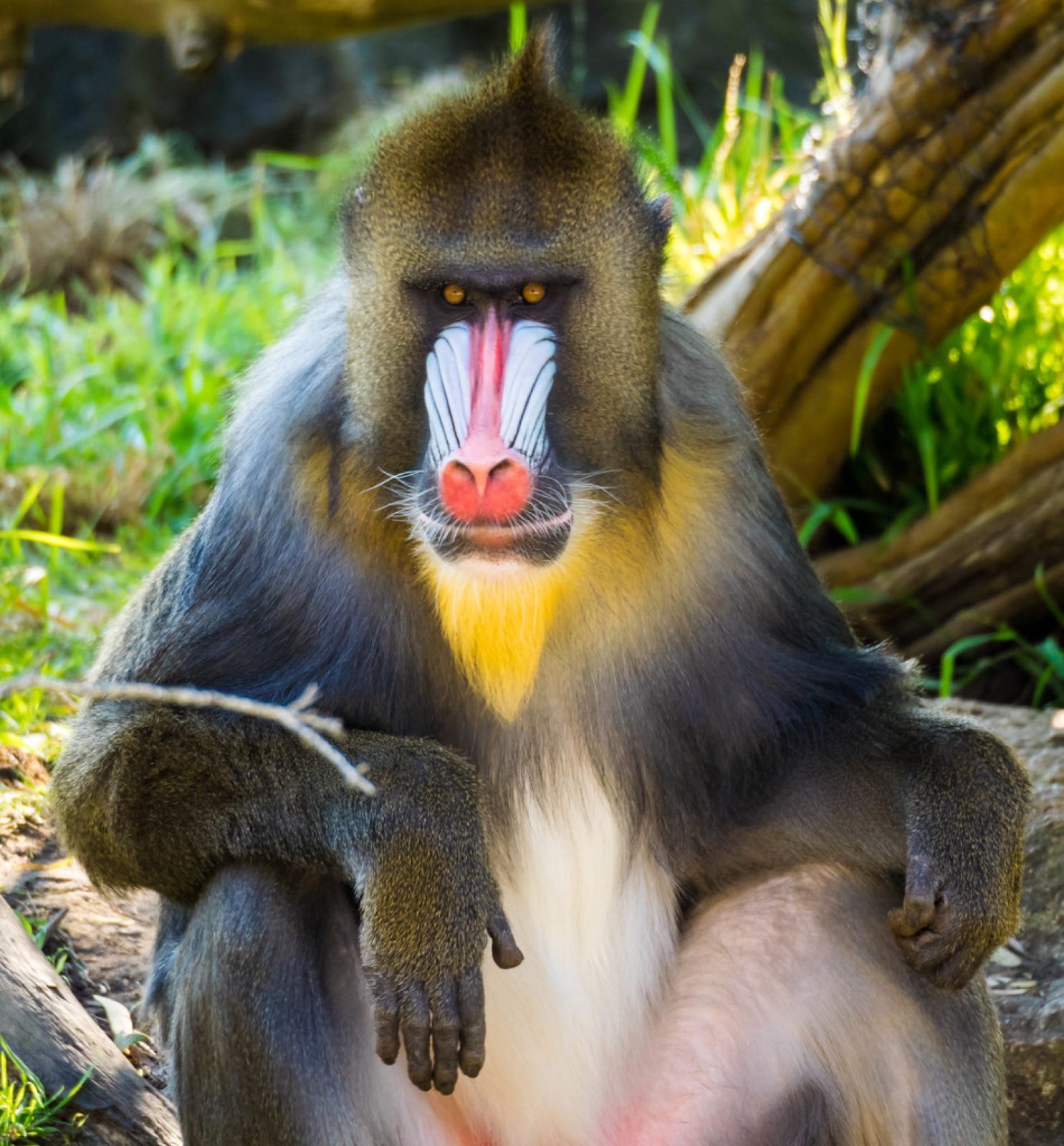
Mandril
The mandrill (Mandrillus sphinx) is a large Old World monkey found in western central Africa. It is one of the most colourful mammals in the world, with red and blue skin on its face and bottom. Males are far larger than females, having a larger body, longer canine teeth and brighter colouring. It is the largest monkey in the world. The closest related monkey is the drill with which it shares the genus Mandrillus. Both species were thought to be baboons, but it has recently become clear that they are more closely related to the white-eyelid mangabeys species.
Mandrills generally live in tropical rainforests but will also travel across savannas. They are active during the day and spend most of their time on the ground. Their preferred foods are fruit and seeds, but mandrills will consume leaves, piths, mushrooms, and animals from insects to juvenile antelope. Mandrills live in large, stable groups known as “hordes” which can number in the hundreds. Females form the core of these groups, while adult males are solitary and only reunite with the larger groups during the breeding season. Dominant males have the most vibrant colors and fattest flanks and rumps, as well as fathering the many of the young in the group
The mandrill is classified as vulnerable on the IUCN Red List. Its biggest threats are habitat destruction and hunting for bushmeat, as is the case for much of the endangered primates. Gabon is considered the stronghold for the species. Its habitat has declined in Cameroon and Equatorial Guinea, while its range in the Republic of the Congo is limited.
The core of its diet consists of plants, of which it eats over a hundred species. One study found the mandrill’s diet was composed of fruit (50.7%), seeds (26.0%), leaves (8.2%), pith (6.8%), flowers (2.7%), and animal matter (4.1%), with other foods making up the remaining 1.4%.
During the wet season, mandrills forage in continuous forest, when fruit is most available, while during the dry season they feed in gallery forests and at the borders of savannas and forests.
The rest of a mandrill’s diet is largely made up of invertebrates, particularly ants, termites, crickets, spiders, snails, and scorpions. They also eat birds and their eggs, frogs and rodents. Mandrills have been recorded preying on larger vertebrates such as juvenile bay duikers. Such prey is killed with a bite to the head followed by pulling off the hind limbs and tearing open the belly. Individuals may cooperate during hunting and share kills.
Below is a documentary on this species. Below this, we will include a list of any articles written on this subject on the website (if or when these are written). Below this, I will add any places that it is worth going to, in order to see this species in the wild. To view the page on the closely related Drill click here